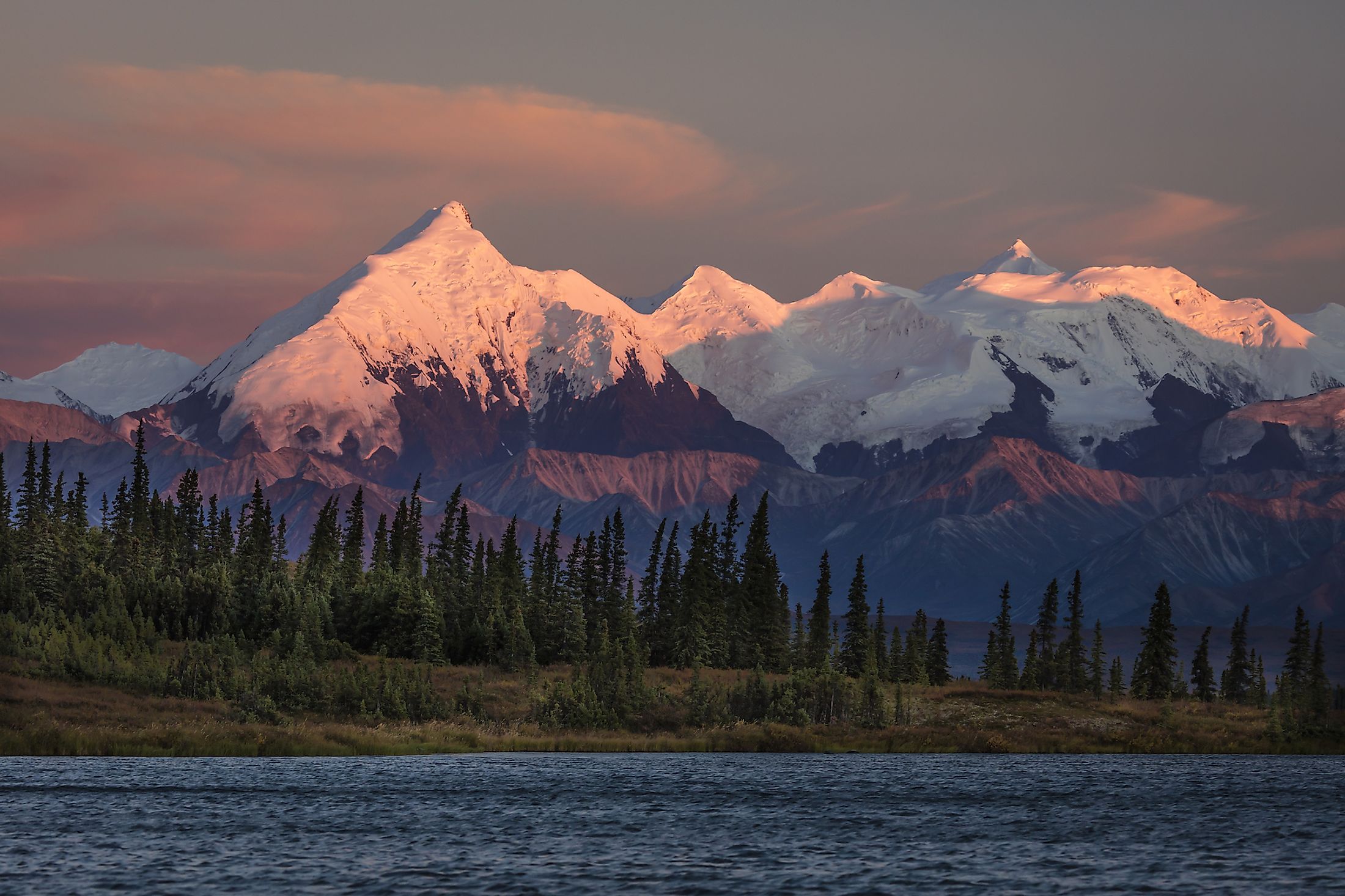
Mount Denali
Geographically positioned in the Northern and Western hemispheres of the Earth, North America is the world’s 3rd largest and 4th most populous continent that occupies an area of 24,709,000 sq. km. Situated in the extreme northwestern corner of the North American continent is the US State of Alaska. This large state covers an area of 1,717,856 sq. km and features several geographical landforms ranging from majestic mountains, active volcanoes, glaciers, and huge tracts of forested land.
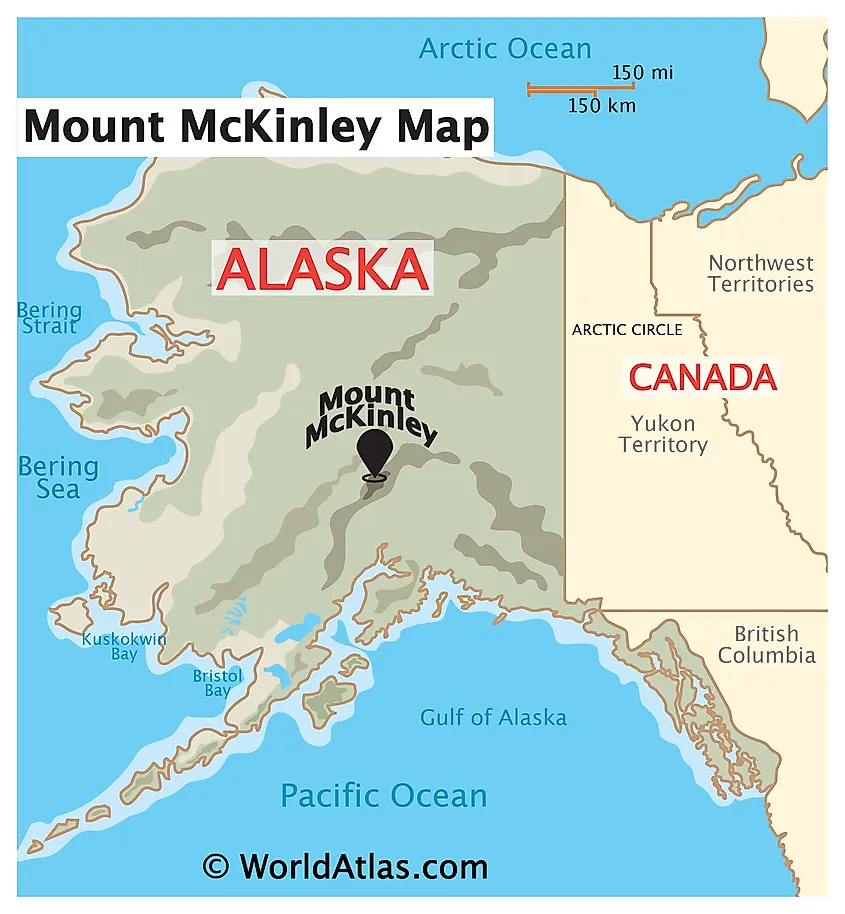
Located in the south-central part of the US State of Alaska, close to the center of the massive Alaska Range is Mount Denali or Mount McKinley. Rising to an elevation of 6,190m above sea level, Mount Denali is the highest mountain in the State of Alaska as well as in the entire continent of North America. It is also the 3rd most isolated mountain peak on Earth and the 3rd most prominent peak among the Seven Summits of the World after Mount Everest and Mount Aconcagua. Mount Denali forms the central feature of the Denali National Park and Preserve and is located about 210 km to the north-northwest of Anchorage - Alaska’s most populous city and about 275 km southwest of Fairbanks – one of the largest cities in interior Alaska.
Geography
According to a survey conducted by the U.S. Geological Survey in 2015, Mount Denali rises to an elevation of 6,190m above sea level. The topographical prominence of Denali is 6,155m and the topographical isolation of the mountain is 7,436.9 km.
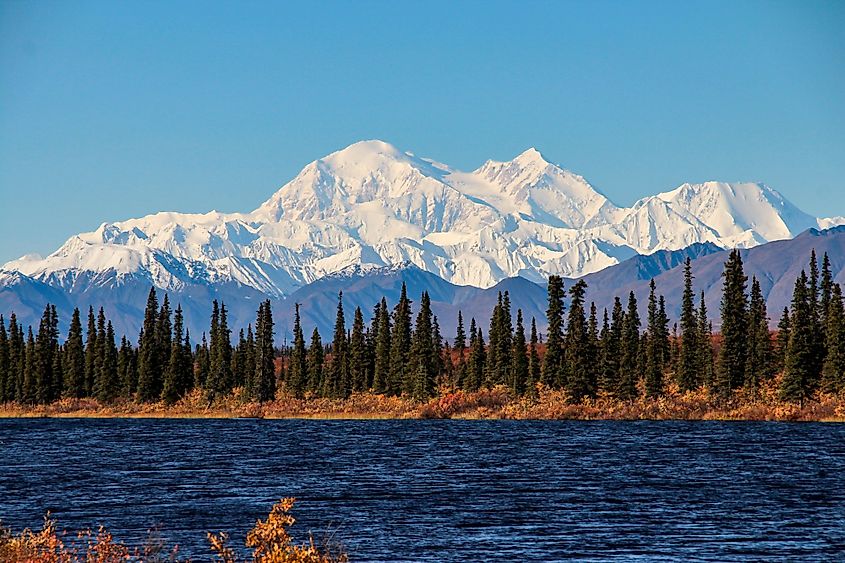
Mount Denali is a massive block of granite that was raised above the Earth’s crust by tectonic pressure about 60 million years ago, due to the subduction of the Pacific Plate below the North American Plate. During this time, most of the sedimentary material above and around the mountain was stripped away due to erosion. The intense tectonic activity continues to increase the elevation of the mountain little by little every year. The Denali Mountain has two notable summits that rise above the Denali Fault. The South Summit is comparatively higher than the North Summit which rises to an elevation of 5,934m. The upper half of the Denali Mountain is covered with permanent snowfields that feed five large glaciers. These large glaciers include the Kahiltna Glacier, the Muldrow Glacier, the Peters Glacier, the Ruth Glacier, and the Traleika Glacier. The Kahiltna Glacier has a length of 71km and is the Alaska Range’s longest glacier. The temperatures on the mountain are extremely cold reaching -59.44°C. Wind chills can reach as low as -83.33°C.
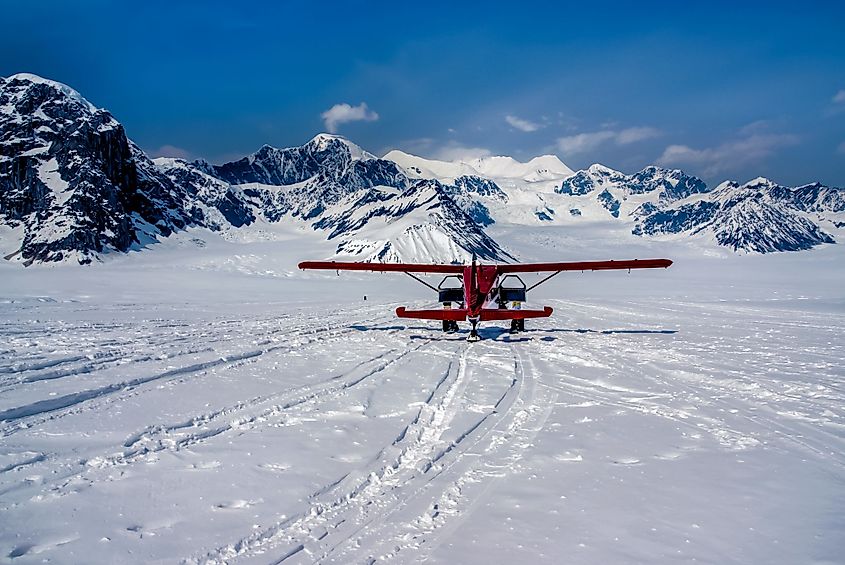
More than 400,000 people visit the Denali National Park every year from May to September. More than 32,000 people have attempted to reach the summit so far, but only a few of them have managed to reach the summit till date. Due to the mountain’s location beyond the 63 degrees latitude, the mountain has the lowest barometric pressure compared to the other taller mountains around the world.
Ecology
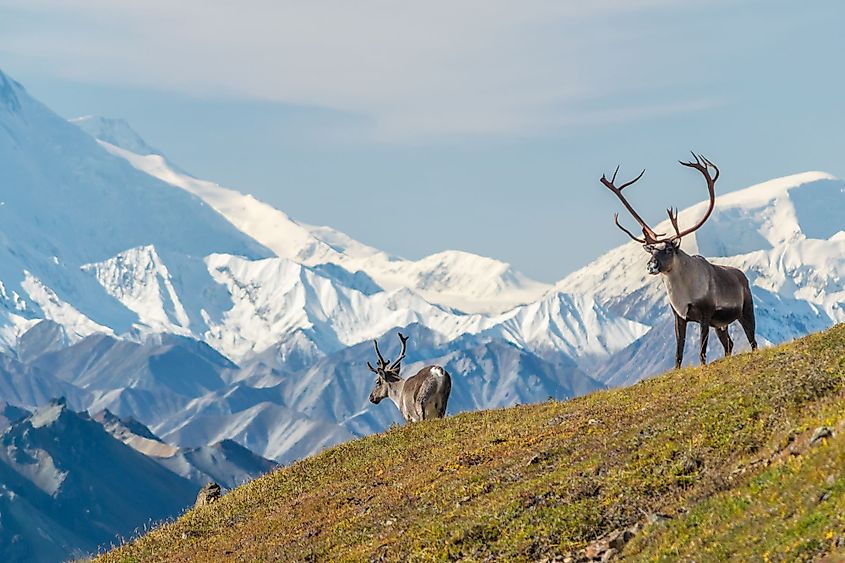
The Denali Mountain is located within the Denali National Park and Preserve which covers a total area of 24,464 sq. km. About 17% of the Denali National Park and Preserve is covered by glaciers and most of the park features a vast expanse of alpine tundra, with the treeline being limited to an altitude of 760m. The lowland areas of the park are dominated by forests of willows and spruces. During summer more than 450 species of flowering plants bloom in the park. Some of the notable mammalian species that are found here include grizzly bears, black bears, wolves, moose, caribou, coyotes, Arctic ground squirrels, hoary marmots, snowshoe hares, etc. Many migratory and resident birds are found here including tundra swan, Arctic warblers, pine grosbeaks, golden eagles, gyrfalcons, owls, etc. Fishes like salmon, trout, Arctic grayling, etc are found in the waters of the Denali National Park and Preserve.
Origin of the Mountain’s Name
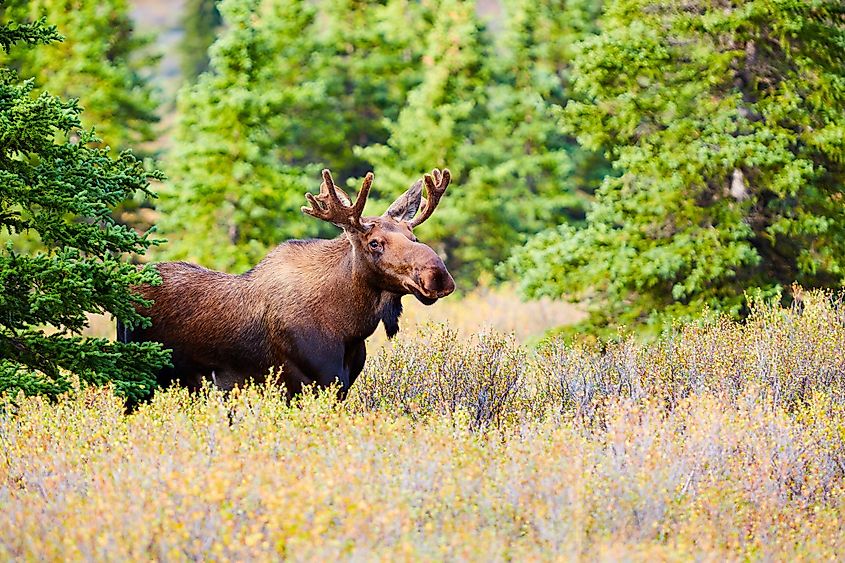
The name ‘Denali’ is based on the local name by which the mountain was referred to by the indigenous Koyukon Athabascan people for several centuries. The name ‘Denali’ meant “The High One” or “The Tall One” in the native Koyukon language. During the Russian occupation of Alaska, the mountain was commonly known as “Bolshaya Gora” or “The Great Mountain”. In 1889, a gold prospector named Frank Densmore named it “Densmore’s Mountain”. However, in 1896, another gold prospector named William Dickey, named the mountain “Mount McKinley”, in the honor of US President William McKinley. The Federal Government of the United States formally recognized the name “Mount McKinley” as the official name of the mountain on February 26, 1917, after the signing of the “Mount McKinley National Park Act” by President Wilson. In 1965, the north and south peaks of the mountain were named “Churchill Peaks” by US President Lyndon B. Johnson, in honor of Sir Winston Churchill, the Prime Minister of the United Kingdom. In 1975, the name of the mountain was changed to ‘Denali’ by the Alaska Board of Geographic Names. During this time, the Alaska State legislature also petitioned the federal government to change the mountain’s name to Denali. However, the petition was blocked by Ralph Regula – an Ohio Congressman. On August 30, 2015, US President Barack Obama finally restored the mountain’s name to “Denali”.
Brief History
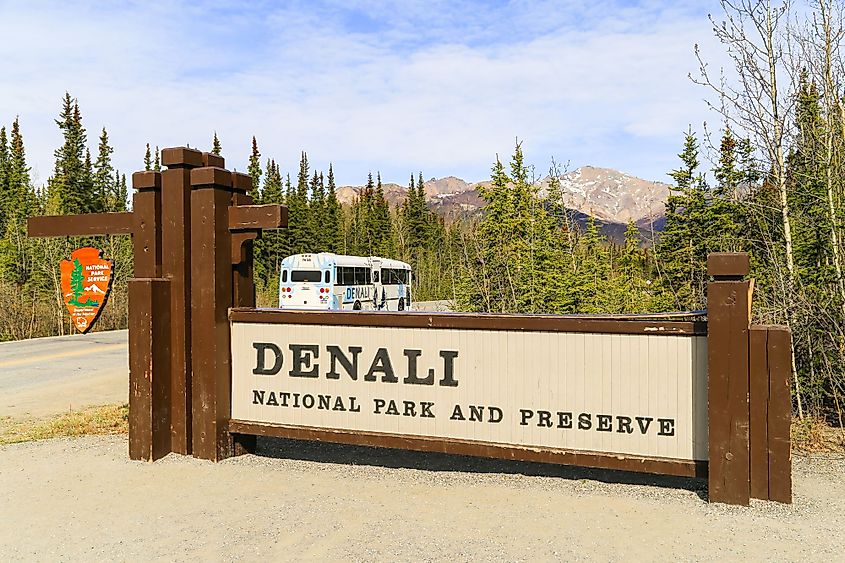
The flanks of Mount Denali were first accessed by the native Koyukon Athabaskans. On May 6, 1794, the English explorer George Vancouver, became the first European to see the mountain from the Cook Inlet. Several attempts have been made throughout history to climb to the summit of Mount Denali. In 1903, an unsuccessful attempt was made by Alaskan Judge James Wickersham along with his four team members. After Mr. Wickersham, several people have tried to climb the summit but were unsuccessful in all their attempts. The first success was eventually achieved on June 7, 1913, by a team of four mountaineers namely Hudson Stuck, Harry Karstens, Robert Tatum, and Walter Harper, who made the ascent through the South Summit. In 1951, the West Buttress Route which is considered the easiest and the safest climbing route was founded by the American explorer Bradford Washburn.











